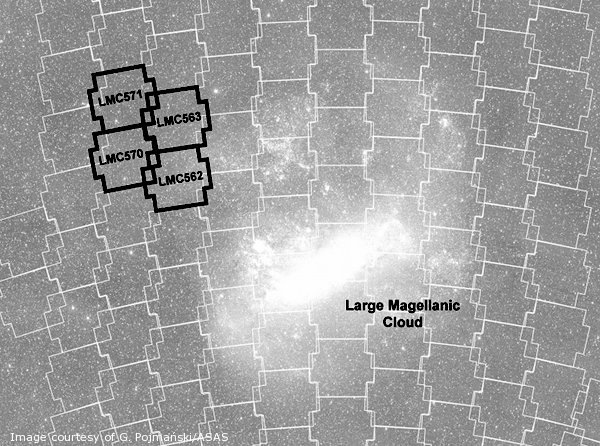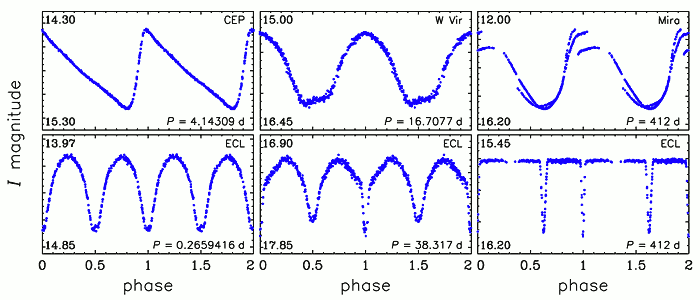Gaia South Ecliptic Pole Field as Seen by OGLE-IV
We present a comprehensive analysis of the Gaia South Ecliptic Pole (GSEP) field, 5.3 square degrees area around the South Ecliptic Pole in the outskirts of the LMC, based on the data collected during the fourth phase of the Optical Gravitational Lensing Experiment, OGLE-IV. The GSEP field will be observed during the commissioning phase of the ESA Gaia space mission for testing and calibrating the Gaia instruments.

We provide the photometric maps of the GSEP region containing the mean VI photometry of all detected stellar objects and their equatorial coordinates. We show the quality and completeness of the OGLE-IV photometry and color-magnitude diagrams of this region.

We conducted an extensive search for variable stars in the GSEP field leading to the discovery of 6789 variable stars. In this sample we found 132 classical Cepheids, 686 RR Lyrae type stars, 2819 long-period, and 1377 eclipsing variables. Several objects deserving special attention were also selected, including a new classical Cepheid in a binary eclipsing system (LMC562.05.9009).

To provide empirical data for the Gaia Alert system we also conducted a search for optical transients. We discovered two firm type Ia supernovae and nine additional supernova candidates. To facilitate future Gaia supernovae detections we prepared a list of more than 1900 galaxies located in the GSEP field.

Finally, we present the results of astrometric study of the GSEP field. With the 26 months time base of the presented here OGLE-IV data, proper motions of stars could be detected with the accuracy reaching 2 mas/yr. Astrometry allowed to distinguish galactic foreground variable stars detected in the GSEP field from LMC objects and to discover about 50 high proper motion stars (proper motion >100 mas/yr). Among them three new nearby white dwarfs were found.

All data presented in this paper are available to the astronomical community from the OGLE Internet archive.
PLEASE cite the following paper when using the data or referring to these OGLE results:
Soszyński et al. 2012,
Acta Astronomica, 62, 219, (arXiv:1210.1219).
Any comments about the data and the form of their presentation are
welcome as they can improve the future releases of catalogs of variable
stars detected by the OGLE collaboration. Send your messages to this address.
 back
back